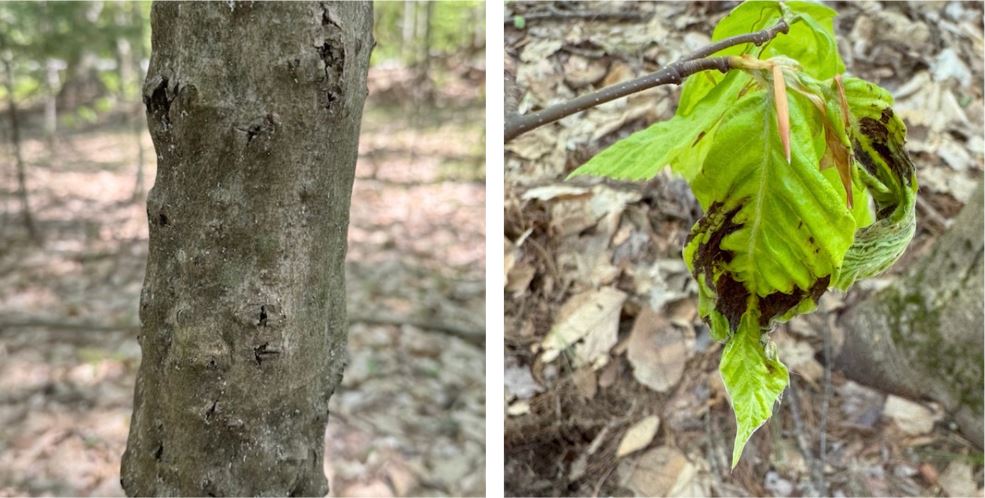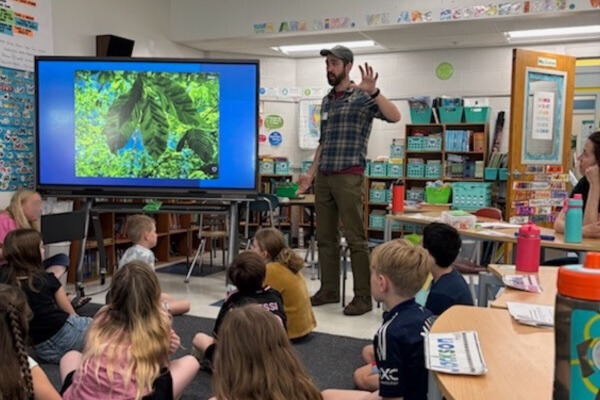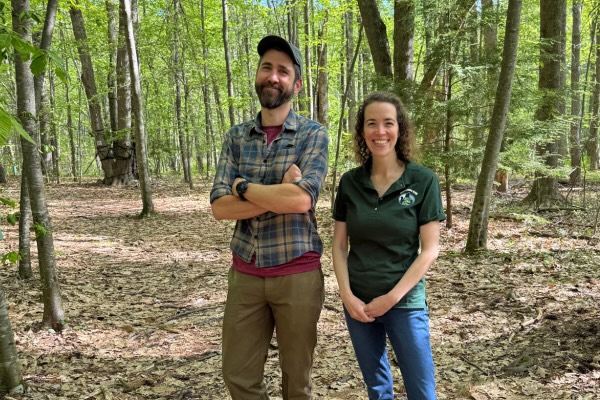Stars and STEM Stories
GLOBE United States: Elementary Students Use Historical GLOBE Data to Recognize Tree Disease New to Schoolyard
Students at Moharimet Elementary School in Madbury, NH, made an important discovery this spring. As they were observing trees in the school’s forest for budburst and leaf growth, they noticed that some of the American beech (Fagus grandifolia) leaves were not growing as expected. Some leaves appeared shriveled and were turning black. Other beech trees had what the students called “bubbles” on the bark.

A beech tree with “bubbles” on its bark and beech leaves looking
shriveled and blackened,
a sign of beech bark disease.
The students’ observations were taken as part of the GLOBE Program’s North American Phenology Campaign, which the school has been participating in for the past four years.
When they found the shriveled beech leaves, Ellen Ervin, Moharimet’s math and science specialist, called Nick Lanzer, a local forester, to find out what was going on. Nick has consulted with the school in the past and quickly identified the problem—beech leaf disease and beech bark disease. Nick visited the school to talk with students about the two beech diseases and answered their questions. Ellen said, “It was really powerful for us to have a professional come in and talk about it.”

Nick Lanzer talks with the Moharimet class about beech leaf disease.
Ellen talked to the students about how keeping long-term data sets is very important, and having their GLOBE data from previous years gave them the ability to look at previous years’ data for signs of the disease. They decided that some trees were in their second year with the disease during the spring of 2025. They had learned from Nick that there is no cure for beech leaf disease and that trees generally begin to die at Year 3.
Nick said, “I was thrilled to see firsthand how local elementary school students are learning about beech leaf disease through leaf phenology studies. Not only does this provide a valuable teaching opportunity for these students, but their observations add to GLOBE's data network which, among other things, tracks phenological data that can be used to support scientific study. Their contributions, and those of their peers, could aid in a better understanding of beech leaf disease.”

Forester Nick Lanzer and New Hampshire GLOBE Partnership Coordinator Haley Wicklein visited the woods near Moharimet Elementary School.
The class shared their findings through a video at the GLOBE Europe and Eurasia Our Spring with Trees webinar (link starts at Moharimet video) where students from eight countries shared 14 presentations. At the end of their presentation, they asked if anyone in the other participating countries had seen beech leaf disease. Josef Brůna, a botanist with Institute of Botany, CAS, responded that the beech trees in European forests are different species, but there are ornamental American beech growing in his region and he has not noticed the disease.
Beech leaf disease was first discovered in New Hampshire in 2022. While it has been seen in Madbury in prior years, 2025 was the first year it was discovered at Moharimet Elementary. Ellen plans to continue these studies with students moving forward, and they will keep an eye on the beech trees while they also monitor other species.
Learn more about GLOBE United States.
Story courtesy of GLOBE U.S. Coordination Office.
Photos courtesy of Oyster River Cooperative School District.





